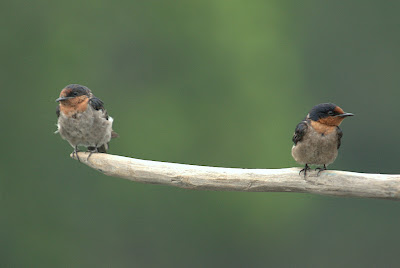It was with great excitement and jubilation that I had the opportunity to meet up with the another Barred Eagle Owl. It's not often that one gets to see an owl. So two encounters in 2 weeks is better than average.
My friends and I took our time to observe and photograph the numerous 'antics' of this fine bird of prey. From the photos you will note that this wild bird have a 'soft side' which endears it to many who saw my earlier postings. It has received expressions of cute, beautiful, dreamy eyes etc etc. Mind you this bird was not coached to pose for the camera. :-)
Below are a few more pics taken during this trip.My friends and I took our time to observe and photograph the numerous 'antics' of this fine bird of prey. From the photos you will note that this wild bird have a 'soft side' which endears it to many who saw my earlier postings. It has received expressions of cute, beautiful, dreamy eyes etc etc. Mind you this bird was not coached to pose for the camera. :-)
Big round eyes!
It feels good - after a good ruffle!
Time to take a snoooozzzzzz..........










 e
e






































